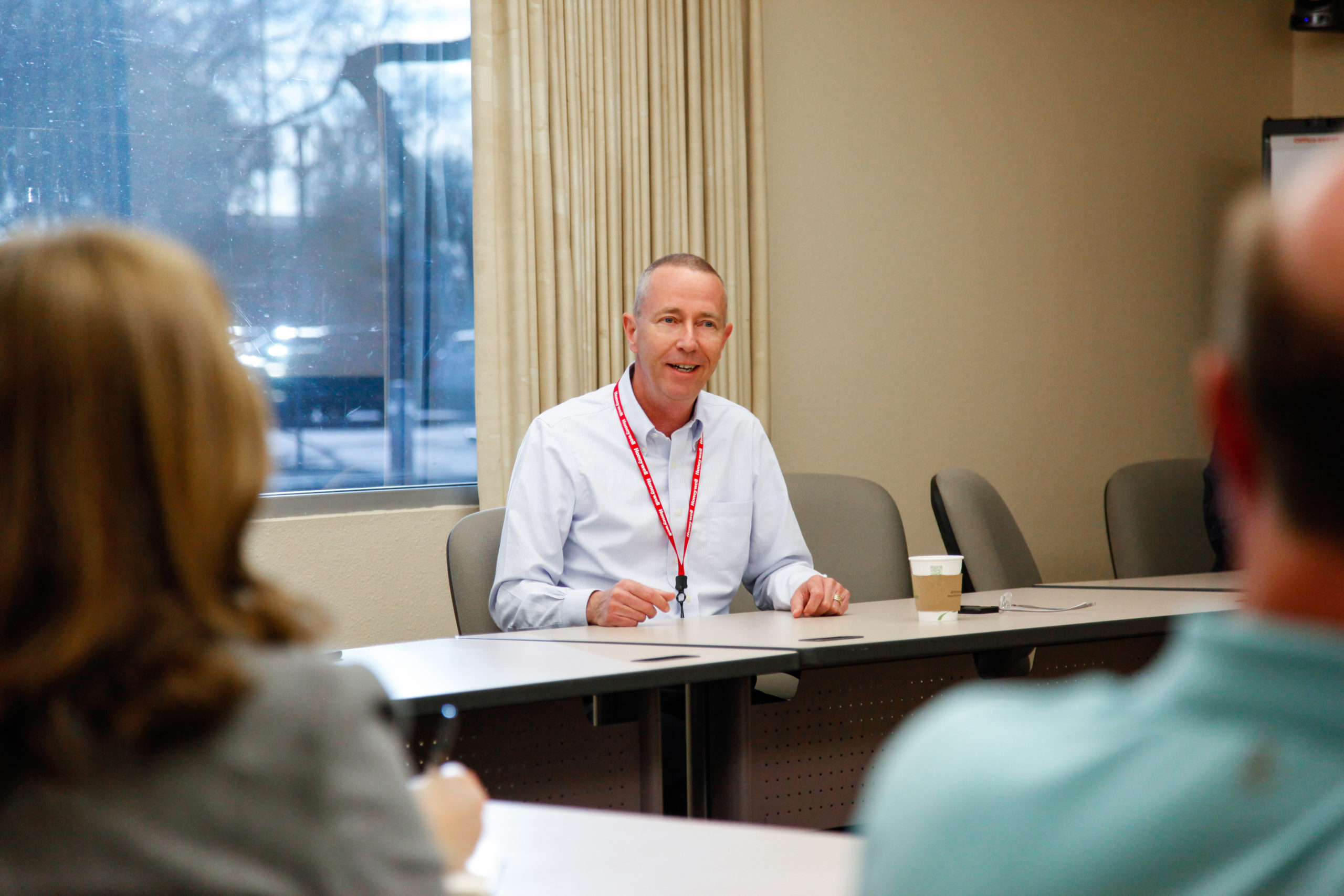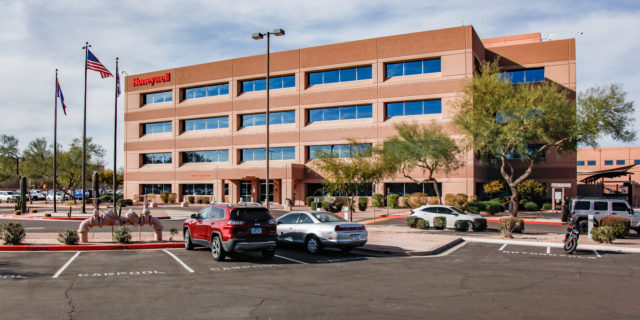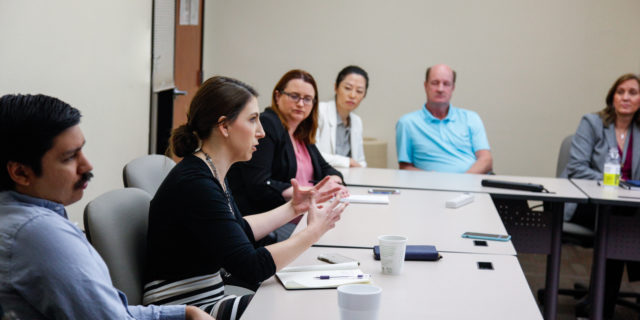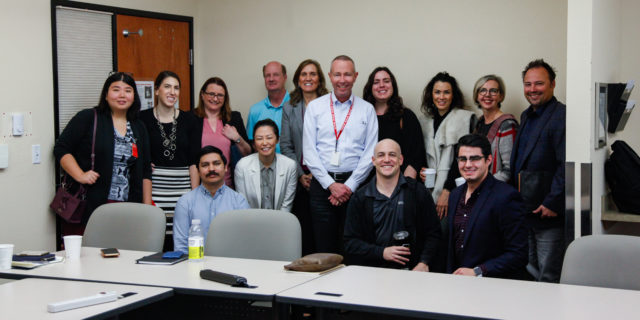

Honeywell fireside chat: Kicking innovation driving mindsets into high gear
Published: 01/21/2020
Updated: 03/10/2021
Very few industries today have avoided the challenge that technology disruption often brings: innovate or die.
One of the most recent industries to go through this process is the aerospace industry. The development of new innovation, an increase in global demands and the introduction of private companies like Honeywell and SpaceX have changed the industry and forced innovative thinking into the forefront.
We continued our fireside chats with GPEC board members by sitting down with Mike Madsen, the president and CEO of Honeywell Aerospace. The conversation was joined by Karen Mattimore, Honeywell vice president of human resources and communications, and Mike Steward, Honeywell vice president of engineering.
Mike Madsen and his team shared that the long life cycle and complexity of the industry allowed the aerospace sector to remain in its own silo of innovation longer than other sectors. Madsen shared with us how Honeywell has been able to build on the success of their legacy operation and infuse positive innovation driving mindsets into the fabric of their culture by escaping old-fashioned forms of business thinking.
The Serial Thinker
Serial thinking is a close-minded approach to development. It leads to missed opportunities. This approach assumes that A+B=C and there is no other way to get there.
Today’s speed of development and competition does not give innovators the space to operate on such a linear process and still be profitable. The serial thinking mindset must be put away and a more parallel way of thinking must be adopted.
For Honeywell, this meant creating opportunities to bring in venture capitalists, universities and entrepreneurs to showcase the technologies that have already been developed in order to brainstorm new uses. Madsen pointed out that collaborating with fresh minds not only brought new uses for old or discarded technologies and ideas, but also sparked fresh thinking for new solutions.
Some of Honeywell’s best products have come from ideas that were developed years beforehand, Madsen said.
“It’s fun to see how time and time again, we’ve created a solution to a problem before knowing the issue even existed,” he said.
The “This is How it is Done Because This is How it has Always Been Done” Thinker
One of the quickest ways to kill innovation is to assume that the way something has always been done is the way it should be done.
Madsen calls it “anti-agility” when someone actively resists change and innovation. Here is the tough reality: The market will eventually get the change it desires. It will either come from you, or the market will get it from someone else. Today’s fast-moving market requires businesses to question their processes and create more efficient developments to remain viable.
The most agile companies are rewarded for their flexibility and speed.
To stay agile, Honeywell created a team dedicated to innovation with a goal of developing the next breakthrough technologies that have the potential to generate $100 million in revenue in five years.
This challenged leadership to change their mindset on how a team must function. Management determined the best way for the team to function was to remove tight oversight and trust the innovation team to operate with independence.
The Failure-Focused Thinker
The desire to not change — to be anti-agile — is rooted in the fear of failure. This cannot be feared in an organization that innovates. Instead, failure must be viewed as a stepping stone towards success. The challenge for leadership is to find the proper expectation that drives development. Understanding what is anticipated from the team enables them to take risks without fearing consequences.
In an effort to push fear thinking to the curb, Honeywell leadership was clear about their expectations. They told the innovation team to expect two-thirds of their ideas to be shot down, and after further development, another 17% to be put out to pasture. This sets the expectation that if even 20% of their work is accepted, it’s a success.
Because failure is part of the process, rejection is not taken personally. It is often anticipated — and more importantly, it is learned from. After some time, the innovation team learned to accept the results without fear of losing their jobs. As a result, the team now presents bolder and riskier ideas, stretching well beyond what the old process had allowed.
Innovation takes community
If you have experienced these mindsets, you’re not alone. The good news is that Greater Phoenix is filled with companies and leaders who have faced the same challenges. GPEC is focused on bringing the best companies and entrepreneurs to our economic ecosystem to drive technological innovation and development.
If you are an innovator and want to be part of our growing community or connect with other like-minded leaders, engage with us here.
Have a story to share? Tell us about it now.


